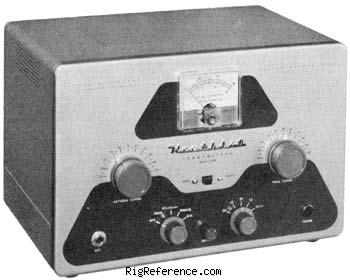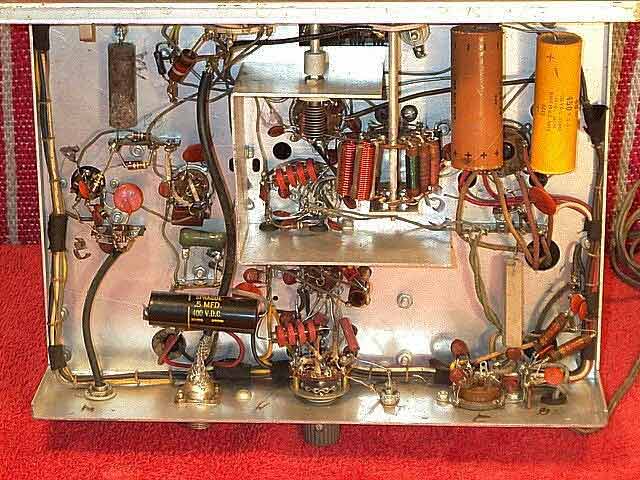
The Heathkit DX 40 is a legendary ham radio transmitter that has captured the hearts of amateur radio enthusiasts for decades. Introduced in the 1960s, this classic piece of equipment was a popular choice among radio operators due to its reliability and exceptional performance.
Designed by the renowned electronics company Heathkit, the DX 40 was known for its solid construction and user-friendly interface. It featured a robust design that could withstand the rigors of daily use, making it a favorite among radio operators who valued durability.
One of the standout features of the DX 40 was its impressive power output. With a maximum output of 100 watts, this transmitter was capable of reaching long distances and making clear, crisp transmissions. Whether you were communicating with fellow ham radio operators across town or across the globe, the DX 40 delivered exceptional signal strength.
Another notable aspect of the DX 40 was its versatility. It could operate on multiple bands, allowing users to communicate on different frequencies depending on their needs. This flexibility made the DX 40 a valuable tool for both casual operators and serious radio enthusiasts.
Although the DX 40 is considered a vintage piece of equipment, it still holds a special place in the hearts of many ham radio operators. Its timeless design and exceptional performance have made it a sought-after collector’s item, while its reputation for reliability and durability continue to make it a popular choice among amateur radio enthusiasts.
Overview of the Heathkit DX 40 Transmitter

The Heathkit DX 40 is a classic ham radio transmitter that was first introduced in the 1960s. It quickly gained popularity among amateur radio operators due to its reliable performance and affordable price. The DX 40 was designed and manufactured by Heathkit, a well-known company in the field of amateur radio equipment.
Design and Construction
The DX 40 transmitter features a sturdy and durable construction, with a metal chassis and high-quality components. Its design is simple and straightforward, making it easy to assemble and operate. The front panel of the transmitter includes various controls and indicators, allowing the operator to adjust the frequency, power output, and modulation settings.
Key Features
The Heathkit DX 40 offers several key features that make it a popular choice among amateur radio enthusiasts. These include:
| Feature | Description |
|---|---|
| Frequency Coverage | The DX 40 covers the amateur radio bands from 80 to 10 meters, providing a wide range of operating options. |
| Power Output | With a maximum power output of 90 watts, the DX 40 is capable of reaching long distances and communicating with other operators around the world. |
| Modulation Modes | The transmitter supports both AM and CW (Morse code) modulation modes, allowing for versatile communication options. |
| Variable Crystal Control | The DX 40 features a variable crystal control that allows the operator to fine-tune the frequency for optimal performance. |
| Built-in VFO | Unlike many other transmitters of its time, the DX 40 includes a built-in variable frequency oscillator (VFO), eliminating the need for an external frequency source. |
Performance and Reliability
The Heathkit DX 40 is known for its excellent performance and reliability. It provides a clean and stable signal, ensuring clear communication even in challenging operating conditions. The transmitter’s robust construction and high-quality components contribute to its long-lasting durability, making it a valuable asset for any amateur radio operator.
Features and Specifications of the Heathkit DX 40
The Heathkit DX 40 is a classic ham radio transmitter that has been widely used by amateur radio operators for many years. It is known for its reliability, durability, and excellent performance. This transmitter offers a range of features and specifications that make it a popular choice among radio enthusiasts.
Another notable feature of the DX 40 is its frequency coverage. It operates on the 80, 40, 20, 15, and 10-meter bands, providing you with a wide range of options for communication. Whether you want to chat with fellow hams locally or make contacts around the world, this transmitter has you covered.
The DX 40 also offers a variety of tuning options to ensure optimal performance. It features a built-in VFO (Variable Frequency Oscillator) that allows for precise frequency control. Additionally, it has a crystal calibrator that ensures accurate frequency calibration, making it easier to tune in to the desired frequency.
In terms of construction, the DX 40 is built to last. It features a sturdy metal chassis that provides excellent protection against external interference and damage. The front panel is well-designed and easy to navigate, with clearly labeled controls and indicators.
Furthermore, the DX 40 is equipped with a range of safety features to protect both the operator and the equipment. It has a built-in power supply that provides stable and reliable power, preventing voltage fluctuations that could damage the transmitter. It also has a built-in fuse that protects against short circuits and overloads.
Legacy and Impact of the Heathkit DX 40
The Heathkit DX 40 transmitter has left a lasting legacy in the world of ham radio. Introduced in the 1960s, it quickly became a popular choice among amateur radio operators due to its reliability and performance.
In terms of performance, the DX 40 was a reliable and capable transmitter. It offered a power output of 90 watts, which was considered impressive for its time. Its frequency range covered the popular amateur radio bands, allowing operators to communicate with other hams around the world.
The DX 40 also featured a number of innovative features that set it apart from other transmitters of its era. It had a built-in VFO (Variable Frequency Oscillator), which allowed for precise tuning and frequency control. It also had a built-in antenna tuner, making it easier for operators to match their antenna to the transmitter for optimal performance.

Over the years, I have amassed a wealth of experience and knowledge, which I eagerly share with fellow radio aficionados. Through my writing and active participation in the amateur radio community, I strive to inspire others and provide valuable insights into this fascinating hobby. Engaging in various radio activities, I continue to learn and grow, constantly amazed by the endless possibilities that radio communication offers.

